
Wind and Weather Tools
The best sailboat wind direction indicators, wind speed meters & anemometers.
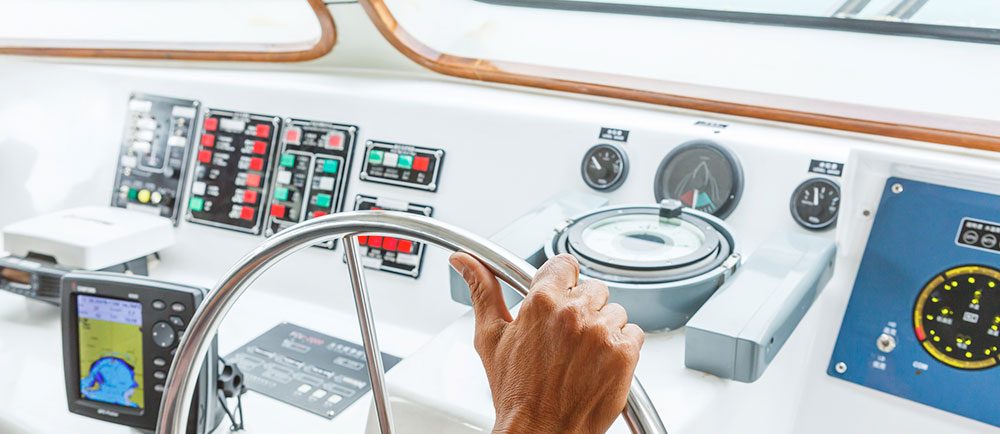
If you’re a sailing enthusiast you probably are no stranger to needing accurate wind speed and direction information. There are a slew of wind meters available today for just about every need: from handheld anemometers (wind speed meters), to sailboat mounted wind direction indicators and more. In this article, we’re going to do a roundup of the best wind meters for sailing, wind vanes for sailboats, the best anemometers for sailing, and more.
The best wind direction meters for sailing

WeatherHawk SM-18 SkyMate Hand-Held Wind Meter, Yellow
This floating anemometer is one of the best wind speed meters for sailing. It can measure wind speeds ranging from 0.5 miles per hour all the way up to 99MPH at user-selectable intervals of every five, ten, or 13 seconds (in addition to calculating the average wind speed and tracking peak speed for you). Plus it can also measure wind temperature and wind chill in both Fahrenheit and Celsius. One other nice feature about this sailboat anemometer is that it comes with a durable build and a bright yellow flip-shield. Naturally, it’s also water-resistant so if it falls into the water you’ll be able to easily spot it floating. Also comes with a loop for a lanyard or wrist strap if desired. A belt sheath is also available for this product.
For more handheld anemometers, see our full article: The Best Portable Anemometers & Portable Weather Meters .
Cape Cod Wind Speed Indicator for Sailboats

Cape Cod Wind & Weather instruments have been a staple of sailors since the company was founded in 1939. With an emphasis on quality American-made wind speed indicators, these gauges are built to last.
This wind speed indicator for sailing can mount on your sailboat either vertically or horizontally and it comes with a spinning cup wheel which can be mounted wherever you like (the supplied cable is 50 feet long and comes with a mounting bracket and screws). For wireless anemometers, see our related article: What is the Best Wireless Anemometer & Wireless Wind Speed Meter?
For decades Cape Cod Wind & Weather has supplied sailors with reliable real-time sailboat wind direction indicators, and this wind speed meter for sailing is no exception.
This unit measures wind speed from zero to 100 miles per hour and comes with a ten-year limited warranty. Pairs well with Cape Cod’s Wind Direction Indicator which matches with a lighted dial interface for wind direction metering.
Davis Instruments WindTrak 15 Suspension Bearing

This weather vane for sailboats mounts on your masthead through bolts or a tap and it provides an easy-to-read wind direction indicator. It’s one of the most popular sailing wind vanes on the market and this particular Davis WindTrak model is intended for medium to larger boats (the vane itself is 15 inches long; a smaller model exists for smaller boats). This model has what Davis calls a bird-proof spike to keep seagulls from trying to land on the instrument while you’re sailing. The vane itself features tabs that reflect in order to remain visible at night or in dark conditions.
Davis Instruments Spar-Fly Wind Indicator for Yachts and Dinghies

This compact sailboat wind direction indicator comes in a bright red color and has both a top and side mounting option. It measures 15 inches long, is highly visible, and weighs an astonishing 1.25oz for a highly responsive level of accuracy even in light wind conditions. The Spar Fly sailing wind vane is intended for sailing dinghies or small yachts and has great reviews.
Raymarine i60 Wind System with Masthead Instrument

The Raymarine i60 Wind System measures wind speed and direction as well as a slew of other readings with an easy-to-read digital-dial hybrid display and a masthead mounted instrument. It comes mounting gear and a 100 foot long (30 meters long) cable to connect the wind meter to the display. This is one of the best anemometers for sailing. Can measure wind speed/direction, maximum wind speed (peak), Beaufort scale, Tack and VMG. Plus it has a red backlight for dark conditions.
Frequently asked questions about windvanes for sailboats & the best anemometers for sailing
What features should I look for when shopping for a wind meter for sailing?
The best wind meters are often mounted anemometers made specifically for boating which have a display you can attach to your console. We have a few such wind speed meters for sailboats listed in this article, above.
Handheld anemometers for sailing usually float, are brightly colored, and are waterproof in case they fall into the water. They may also contain temperature gauges and loops for wrist-straps or lanyards.
No matter the type of anemometer you choose, a large easy to read at a glance display is also especially useful for sailing anemometers.
What is an anemometer?
An anemometer is simply a wind speed meter. Some anemometers have digital displays, others have dial displays. The most sophisticated anemometers can also measure a variety of other metrics like temperature, dew point, humidity, barometric pressure, and so forth. Advanced anemometers can even give a personalized weather forecast for any location (especially useful if you’re using an anemometer in a spot where there isn’t a reliable weather forecast). Anemometers for sailing are useful because they give a clear and accurate reading of wind speed and direction. For more information about what anemometers are, read our related article: What is an Anemometer and What is it Used For?
JavaScript seems to be disabled in your browser. For the best experience on our site, be sure to turn on Javascript in your browser.
- My Wish List
- Compare Products
- Create an Account
- Dealer Locator
- 2025 SAILBOAT HARDWARE CATALOGUE

"The WINDEX® Wind Direction Indicator is an indispensable tool for sailors of all levels since it allows instant and accurate wind information at all points of sail"
The WINDEX® is a Swedish invention from 1964 that is currently sold in more than 40 countries across five continents. In total more than 1,500,000 WINDEX Wind Direction Indicators have been sold over the last 45 years.
The different WINDEX models are found at the top of masts on every type of sailboat from Americas Cup boats to racing dinghies, and everything in between.
It is one of the most well known and recognised yachting products. The inventive and superior design of the WINDEX Wind Direction Indicator has allowed it to stay virtually unchanged for more than 40 years.
Windex® Products
Need some advice.

Official Sponsors of the Australian Sailing Team

The Leading
Sailboat wind direction indicator, our products.
Windex 15® Mk2 BirdSpike included
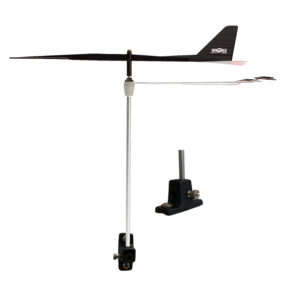
Windex® 10 C | 10-20 feet sized boats
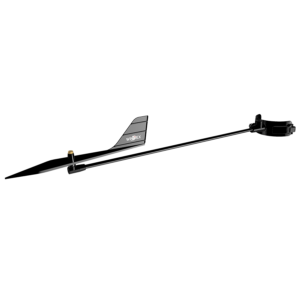
Windex® 6 dinghy | small dinghies
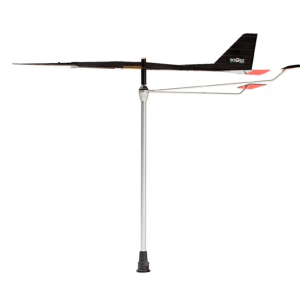
Windex® XL | 40+ feet sized boats
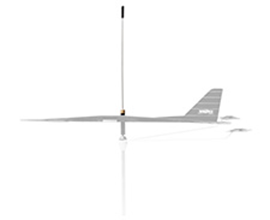
Windex® BirdSpike for Windex 15
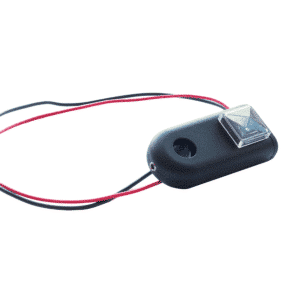
Windex® LED light 12 – 24 volt
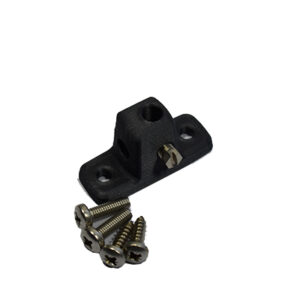
Windex® 15 UniFix
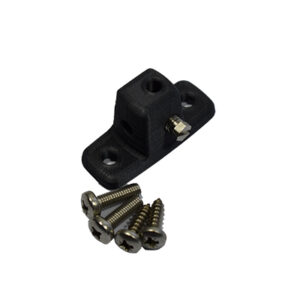
Windex® 10 Unifix
The wind direction indicator.
The WINDEX is a Swedish invention from 1964 that is currently sold in more than 40 countries across five continents. In total more than 1,500,000 WINDEX Wind Direction Indicators have been sold over the last 45 years.
The different WINDEX models are found at the top of masts on every type of sailboat from Americas Cup boats to racing dinghies, and everything in between.
It is one of the most well known and recognized yachting products. The inventive and superior design of the WINDEX Wind Direction Indicator has allowed it to stay virtually unchanged for more than 40 years.
All manufacturing, design and distribution to our WINDEX agents is done in Sweden.
WINDEX SCOUT
A wind direction indicator with a built in antenna.
Presenting Our Brand New Windex Scout VHF Antenna. This unique product is a combination of the Windex 15 high precision wind indicator with Scout's premium VHF antenna. It is a patent pending solution with the Windex mounted on top of Scout's rigid fiberglass antenna. The result is a space saving design which allows for undisturbed relative wind readings and offers high quality VHF transmission. This product comes in two sizes the Windex Scout VHF 50 and the Windex Scout VHF 90.
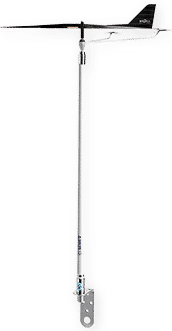
View Gallery
WIND DIRECTION INDICATOR
Contact us for more information.
Please leave this field empty. PLEASE CHOOSE I want to purchase a Windex I have a question about my Windex I want to become a reseller I am a current reseller
Windex® will not participate in Metstrade Show 2021
Due to the restriction around Covid -19 we have decide…
Brewers’ Marine Supply, Ontario – New distributor for…
We are happy to announce that we have entered a…
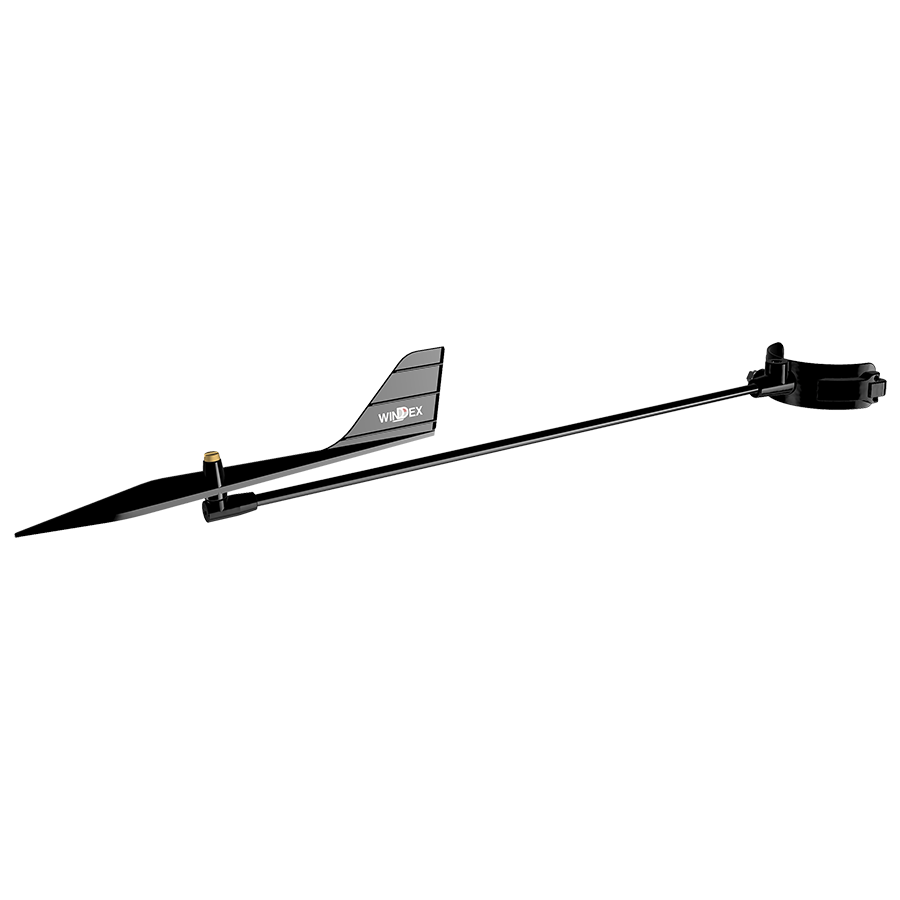
OUR NEWEST ADDITION: Windex® 6 dinghy
We are happy to finally share what we’ve been working…
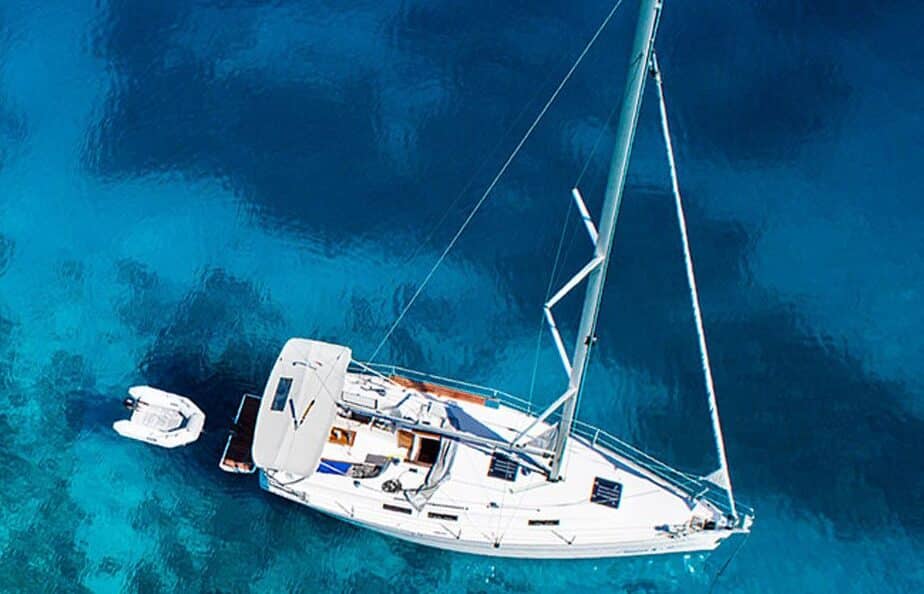
NAUTOS USA – New dealer for Windex products…
We are proudly presenting our new partnership with Nautos USA.…
YOU WILL FIND US
Where you find sailboats.
Contact us for closest supplier. Are you in the yacht or boat índustry and think about become a reseller dont hesitate to contact us. You can also search on google maps to find suppliers close to you Or see distributor list here.
This is Windex
The WINDEX was first designed and brought to market in 1964 by RADAB (Research And Development AB), a small company run by three young engineers who also happened to be close friends, Sven-Olof Ridder, Harald Undén and Lars Bergström.
The original WINDEX design by Sven-Olof Ridder, an aeronautical engineer who is recognized worldwide for his design skills, was made of aluminum. The design was successful and soon became popular with Swedish sailors. However, the international breakthrough came in 1972 when a large investment in plastic tooling was made, which allowed for large quantity production at a lower cost. One of the design criteria at the time was that the WINDEX should be “as sensitive in light air as cigarette smoke”. The solution was a plastic wind vane with low weight and a large fin mounted on a Sapphire jewel bearing like a compass needle.
This design, which incorporates the now famous Sapphire jewel suspension has remained unchanged and extremely popular with sailors through the decades.
RADAB and its founders have also been involved with the development of several other successful engineering projects, among them are the Windex 92 Family Cruiser and the Windex 1200 C.
Rated 4.9 out of 5 on Trustpilot

- MENS SAILING CLOTHING
- DYNEEMA TRAPEZE LINES AND ROPES
- SINGLE SHEAVE BLOCKS
- Gelcoat & Gelcoat Fillers
- Dry Lubricants
- Adhesive Glues
- Hooks & Clips
- Parrel Beads
- Rope Thimbles
- Trailer Wheels
- Breakaway Cables
- VHF Aerials and Atennas
- Sailing Watches
- Dinghy Trolley Wheels
- Catamaran Launching Trollies
- Burgees and Wind Indicators
- Clew Straps
- Upper Masts
- Lower Masts
- Whipping Twine
- Sailmakers Palm
- Rudder & Tiller Parts
- DEVOTI ILCA
- LASER SAIL BOATS & DINGHYS
- BAHIA SAIL BOATS & DINGHYS
- Numbers & Letters
- Sail Cleaner
- Dinghy Covers
- Under Covers
- Catamaran Covers
- Single Handed
- Double Handed
- Canvas Cleaner
- Exocet Moth
- Musto Skiff
- Laser 1 / ILCA
- Laser Stratos
- Dart 15/ Sprint 15
- Hurricane 5.9
- Laser Bahia
- Laser Cascais
- Laser Funboat
Your Cart is Empty
- $0.00 Subtotal
Taxes and shipping calculated at checkout
Order before midday Monday to Friday and we will ship your order the same day.
- 01268 222912
- Accessories
- Laser Products
- Sails & Covers
- Rope Lengths
- Parts By Boat
- Boat Care & Cleaning
- Wind Indicators & Burgees
- Splicing Tools
- Digital Compasses
- Boat Covers
- Dinghy Rope Lengths
- Laser Rope Lengths
- RS Rope Lenghts
- Catamaran Rope Lengths
- Laser Performance
- Topper Sailboats
- Other Boats

Happy New Year! Use code HNY25 to claim your New Year saving this weekend
- Mens Sailing Clothing
- Womens Sailing Clothing
- Junior Sailing Clothing
- Skiff Suits
- Wetsuit Packages
- Wetsuit Tops
- Wetsuit Bottoms
- Repair Kits
- Buoyancy Aids
- Life Jackets
- Hiking Pads & Pants
- Trapeze Harnesses
- Sailing Gloves
- Sailing Jackets
- Smocks & Aquafleeces
- Hats and Head Wear
- Gift Vouchers
- 100m Rope Reel
- 50m Rope Reel
- Control Lines
- Anchor Line & Ropes
- Braid On Braid
- Mini Spools & Reels
- Windsurfing
- Evolution Race Rope
- Excel Control Line
- Braid on Braid
- SK78 Dyneema - 12 Strand
- SK99 Dyneema - 12 Strand
- Mini Spools
- Rope Offcuts
- Single Block
- Double Block
- Triple Block
- Soft Attach
- Traveller Blocks
- Spinlock Cleats
- Large Opening
- Dyneema Soft
- Split Rings & Pins
- Inspection Hatches & Covers
- Bung & Sockets
- Bushes & Fairleads
- Traveler Systems and Parts
- Marine Screws
- Penny Washers
- Wire Shrouds
- Jib Halyard
- Wire Forestay
- Trapeze Wires
- Sail Repair Tape
- Spinnaker Tape
- Harken Marine Grip
- VHF Aerials & Antennas
- Pico Hull & Deck Fittings
- Hull & Deck Fittings
- Bahia Ropes
- Laser Boats
- Laser Sails
- Laser Sail Packages
- Laser Spars
- Laser Rig Packages
- Laser Foils
- Laser Hull & Deck Fittings
- Laser Ropes
- Laser Dinghy Covers
- Laser 1 Rope Lengths

Devoti ILCA
- Devoti ILCA Boats
- ILCA Sail Packages
- ILCA Rig Package
- ILCA Rope Lengths
- Devoti D-Zero Boats
- Devoti D-Zero Parts
- D-Zero Rope Lengths
- SB20 Rope Lengths
- Devoti KDK Boats
- ILCA Charter Boats

New Devoti ILCA
Search our chandlery
Wind indicators and burgees, laser models, topper sailboats models, rs sailboats models, part manufacturers, devoti models, availability.
- Out of stock
Take the guesswork out of sailing with our Wind Indicators with our handy and easy-to-use wind indicators. Our Boat Burgees come in various designs to suit your sailing style. Stay informed about wind speed and direction with these simple and affordable devices. Upgrade your sail control with our Boating Pulleys And Blocks . For ultimate peace of mind, invest in new Sail Rigging Parts and explore our practical Accessories For Boating . Enjoy fast UK shipping and risk-free returns.

Let customers speak for us
Done quickly
It's sturdy, it's not going to fail like a block. Great for trapeze blocks
As requested and fast delivery
These are the only covers that will stand the high temperatures, humidity and pollution from the near by power station. We are based in Larnaca Cyprus with very long summers. I will highly recommend them. Plus Sailing Chandlery staff are brilliant.
Bought for my son. He was delighted with it!
I did wonder how I would change the battery on my timer and this kit s the answer !. I race land yachts and do a two minute rolling start which can be rather mad it times so i need that battery !
Fit ok and feels well padded on sole compared to my old worn out boots
Having thoroughly enjoyed a week's training at the Lyme Regis Sea School this phrase is indelibly printed on my sub conscience (the instructors will be pleased to learn) so to have this mug to remind me each morning at breakfast is a treat.
Good quality product worn well first season.
Reliable and delivered on time as stated. Workmanship is very good and the new spinnaker works a treat. Thank you
Great Product
Always great products and service
Thoes boots are so comfortable I’m so pleased I bought them and they keep your feet so warm.
Fantastic product
Best Sellers

Hints and Tips

How To Build A Laser 6 to 1 Downhaul
December 29, 2024 2 min read

Instructions for Applying ILCA Sail Numbers
December 06, 2024 3 min read

Laser/ILCA Spars Rivets and Plugs Guide
September 26, 2024 2 min read
SIGN UP TO OUR NEWSLETTER
Save up to 40% on your next order.
- New Sailboats
- Sailboats 21-30ft
- Sailboats 31-35ft
- Sailboats 36-40ft
- Sailboats Over 40ft
- Sailboats Under 21feet
- used_sailboats
- Apps and Computer Programs
- Communications
- Fishfinders
- Handheld Electronics
- Plotters MFDS Rradar
- Wind, Speed & Depth Instruments
- Anchoring Mooring
- Running Rigging
- Sails Canvas
- Standing Rigging
- Diesel Engines
- Off Grid Energy
- Cleaning Waxing
- DIY Projects
- Repair, Tools & Materials
- Spare Parts
- Tools & Gadgets
- Cabin Comfort
- Ventilation
- Footwear Apparel
- Foul Weather Gear
- Mailport & PS Advisor
- Inside Practical Sailor Blog
- Activate My Web Access
- Reset Password
- Customer Service

- Free Newsletter

Vancouver 27 Used Boat Review


Pearson Alberg 35 Used Boat Review

Catalina 42 Mk I and Mk II
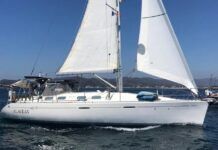
Beneteau First 42s7 Used Boat Review

Simple Lithium for Outboard-Powered Tenders, Daysailers, and Sport Boats

Special Report: How to Prevent AIS and VHF Antenna Malfunction

Vesper Marine WatchMate 850 and Icom M91D: Where Credit is Due

How to Create a Bullet-Proof VHF/SSB Backup

Haul Out Tips to Avoid Confusion and Delays

Checking Rope Strength

Lashing for Strength

Are Wrinkles Killing Your Sail Shape?

Ensuring a Safe Space for Batteries
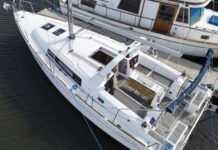
Impact of Modern, Triangular-Design on Boat Performance
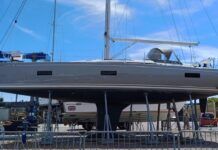
Keel and Rudder Design Basics

Glues and Resins: Can Boatbuilding Be Regenerative?
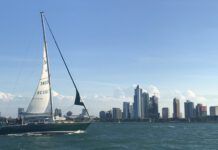
How Much Does it Cost to Have a Boat in Chicago?
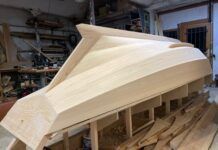
Wooden Boat Revival: Can Boatbuilding Be Regenerative?

PS Advisor: Acid Cleaning Potable Water Systems

Product Hacks: Velcro, Bounce, Anti-Skid Mats and Pool Lights

Stopping Holding-tank Odors

Five Best Cheap Clothing Options for Cold-Weather Sailing

How to Scuba from Your Boat

Compact Scuba Kits for Sailors

Cold Weather Clothes to Extend the Sailing Season

Bilge Pump Installation and Maintenance Tips

Full-Time Ocean Trash Cleanup in the Arctic Circle

Boats That Fly? How High Tech Rocked the America’s Cup

R. Tucker Thompson Tall Ship Youth Voyage

On Watch: This 60-Year-Old Hinckley Pilot 35 is Also a Working…
- Sails, Rigging & Deck Gear
Top-notch Wind Indicators
In this torture test, we examine improvements over those silly bits of yarn (which work quite well, incidentally)..
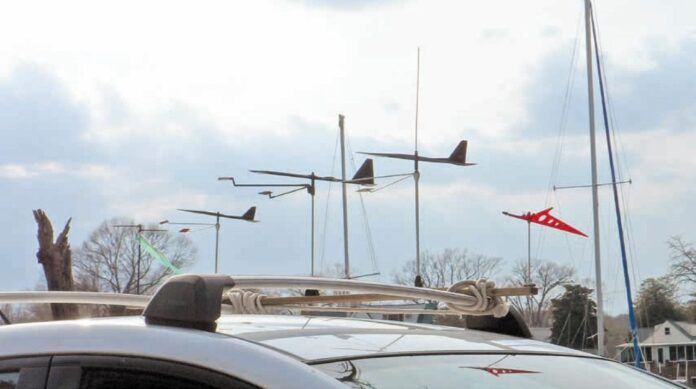
That fragile plastic wind vane at the masthead looks like a child’s toy to a lubber. Its a nautical curiosity perched at the top of a yacht that is also equipped with a comprehensive electronics suite. While we can certainly sail without wind indicators and telltales, judging the strength and direction of the wind by its effect on the sails and the feel on our neck, those little bits of plastic and yarn are darn handy when trimming sail, or balancing the helm.
Information from fixed wind indicators is supplemented by telltales attached to the surface of the sails. These provide vital information about flow around the sails within the boundary layer. In this report, well look solely at the wind vanes.
WHAT WE TESTED
For this comparison, we looked at a variety of masthead and spar-mounted vanes from Blacksmith, Davis and Schaefer, two of the major players in this field. We also included a do-it-yourself (DIY) variation that we used for a decade. A few of these were new to us, but most we’ve used for decades, giving us a pretty good feel for their long-term durability and function.
HOW WE TESTED
First, we mounted all of the vanes on boards, three to four at a time, and observed responsiveness, sensitivity, and accuracy, both level and heeled at 30 degrees. Although there is no absolute reference for wind speed and direction, it was obvious when a single vane was consistently different from the group.
We then mounted vanes on the roof of our car and took them for a drive-first around the neighborhood at moderate speeds, and then for six hours at 50-65 miles per hour, simulating storm conditions.
Finally, we then put them all to work on our test boat. This was a fairly rigorous test that took place over several days (see adjacent article Wind Sensors Face-Off at Sea). Larger vanes were mounted in fishing rod holders along the transom. Although wind turbulence makes the aft vanes useless for windward courses, these worked when reaching, and the location was fine for durability testing and general observation.
OBSERVATIONS
A masthead mounting offers the cleanest air and greatest safety from damage (other than birds). Every sailboat should have one. The larger sizes make sense for larger boats, where visibility from a distance matters, but the smaller sizes seem quite suitable for masts less than 35 feet. Although a masthead indicator often has the cleanest air, it requires staring straight up, can spin crazily in rolly conditions in light air, and can be blocked from view by a Bimini top or sail (if the helm is to one side).
Although a masthead indicator is the norm, a deck-level indicator also offers advantages. Non-sailing crew appreciates them when asked to turn the boat into or away from the wind while hoisting or dousing the sail, for anchoring, or, in reality, any turn at the wheel when a steady course relative to the wind is required. Off the wind, a deck-level indicator is often more steady in rough conditions, less affected by pitching. It also remains in your line-of-sight, as you steer through either lumpy seas at high speed, or crab pots in failing light. The challenge is finding a location where it won’t be destroyed by sheets or sails, or disturbed by airflow.
Single-sail dinghies, such as Lasers or Optimus, can mount them on the mast, just below the sail. Two of the devices that we tested, the Davis Black Max and Schaefer Mini Hawk MK II come with elastic clamps that fit securely around the 1.5-inch aluminum spar.
These devices are quite rugged. During long-term testing, we inadvertently dropped snubber lines and dock lines on all of them, often deflecting them sharply downwards. However, the mounting strap stretched, and they popped right back up, undamaged. One vane was destroyed with a dock line, but that was no fault of the vane.
The bow is also popular on one-sail dinghies; with no headsails or sheets, there is little risk of damage. Beach cats can mount a Telocat just below the bridle. Even with a chute, the sensor is protected by the bowsprit. The straps on the Black Max and Mini Hawk fit -inch stainless railing, if the railing is wrapped with athletic or elastomeric self-bonding tape to reduce slippage (see Atomic Tape, PS December 2005). The occasional trip through a wave didn’t appear to shorten their lives.
A spinnaker complicates things-with sheets flying across the bow with every jibe, there is no sanctuary for a delicate instrument. We had a Davis Windex Sport on the starboard bow rail of our test boat for a while. It was fine with the working jib, the genoa bumped lightly a few times, rotating the mount but doing no harm. A chute, however, destroyed it on the first jibe. After a second vane was destroyed in roughly the same fashion, the solution was the DIY indicator (see adjacent article).
Wind indicators are by definition sensitive instruments, and even the best can be snapped or bent by a large bird. The Davis Windex has a bird spike that dissuades larger birds from sitting on the center support, but smaller birds still roost on the ends of the vane occasionally, spinning slowly. So far (we’ve had one installed for 20 years) they have done no harm, other than bend the indicator arms into a useless sculpture. The plastic indicator arms on the Shaefer wind indicator better resist bending. We presume a big bird could break them, but they survived the summer season test without harm-even after several birds roosted on them. Birds seem to ignore deck-level vanes.
All of the mounting brackets proved sufficiently durable and reasonably easy to fit.
Blacksmith Sport Boat Carbon
In its search for a lighter, more responsive vane, Blacksmith has used carbon fiber and aluminum to build the most responsive vane available. As a masthead fly, it is well balanced and reads the lightest zephyr true, even when heeled.
As a rail-mounted fly it has proven more durable than Windex and Hawk vanes, through we estimate it more fragile than the rugged Black Max/Telo Cat line. So far, it seems too oddly shaped for birds to perch on, and that is the primary mode of failure at the masthead. There is also a very similar Crazy Kids model for dinghies. The Blacksmith comes in both masthead and spar mount versions.
Bottom Line: Best Choice for sport boat masts.
Davis Windex
The most popular masthead wind indicator, these are the gold standard for detecting wind direction finding. Featuring perfect balance and a sapphire bearing, we’ve had these on boats for over 20 years without failure. They wear seemingly forever, the most common-and perhaps only-cause of death being a roosting osprey or eagle, and the bird spike seems to prevent that. The Windex Sport is a smaller version, perfect for smaller boats and some bow installations.
Bottom Line: Sensitivity and proven durability make the Windex our Best Choice for a masthead indicator for cruisers, and the Windex Sport for smaller boats.
We used one of these very regularly for eight years on a trailered beach catamaran, where it served very reliably, without receiving gentle treatment. Useful for estimating both windward and reaching angles. The bridle location is perfect for the high-speed antics of a beach catamaran, where the helmsmans eyes should not spend too much time peering aloft, distracted from the action and the waves. The Telo Cat is specifically designed to mount to the forestay turnbuckle of beach cats, hanging down below the bridle-the Black Max will be easier to fit to most boats.
Bottom Line: Best Choice for beach catamarans.
Sharing the same sturdy vane as the Telo Cat, the Black Max is stable, sturdy, and reliable. Secured by an adjustable elastic strap, the plastic mounting saddle can wrap around spars and poles from -inch to two inches in diameter,
Bottom line: Recommended for single-sail dinghies, gull strikers, and rail mounts.
Compared to other indicators in the group, the Spar Fly seemed to wander more in bouncy conditions and variable winds, taking longer to respond accurately to the true wind. Some will find the traditional design appealing.
Bottom line: This is a functional choice for the nostalgic sailor, but there are better vanes.
This device is little more than toy. Yarn is more durable and responsive, and less susceptible to damage from sheets and sails. The test samples all bent the first day. Additionally, the position near the dodger or cabin resulted in disturbed airflow and erratic readings.
Bottom line: Helpful on some small boats, Wind-Tels won’t be of much use to the cruising sailor.
Schaefer Hawk
Schaefers Hawk is very similar to the Windex, but with plastic indicator arms. The arms can be accurately positioned using a spacer kit and they are not bent when a bird lands on them. They seem nearly unbreakable under normal use, although we did not test for this. Using polyethylene bearings, it is both responsive and sensitive.
Bottom line: Recommended.
Mini-Hawk MKI
Sharing the same vane as the MKII, this is the smallest masthead vane of the group. It is light and very responsive, and is an excellent choice for the masthead of a sailing dinghy. We also tested it on the bow rail, simply attaching the wand with cable ties, and it did very well. If you break the vane, a replacement is $10.
The large tail made the Mini Hawk very responsive, even when wet or in light winds, reacting accurately and instantly to every shift. Although this resulted in a nervous flickering at times, it was always accurate, and its is bright and clearly visibility. The square vane was slightly more vulnerable to hooking a line, although all of the vanes (other than the DIY wand) can be destroyed by heavy contact with a sheet.
Bottom line: Great for dinghy masts and a nice fit for railings.
Mini-Hawk MKII
The spar mounting bracket for the Mini-Hawk II includes adjustability for horizontal or angled mounting on rails, which can be quite useful for bow mounting locations. The elastic mounting band is not adjustable, but it is secure on rails and spars from 1 to 2.5 inches.
Bottom line: This is the Best Choice for a railing or spar-mounted vane.
CONCLUSIONS
This was a strong group of products, and properly located, all provide excellent performance. We like the Windex 15 with the bird spike; it seems to help keep birds away from the masthead in general. The responsiveness of the Mini Hawk was impressive, and the durability of the Telo Cat and Black Max recommend them for use where some contact is possible. Our DIY wand remains a favorite where abuse is the rule.
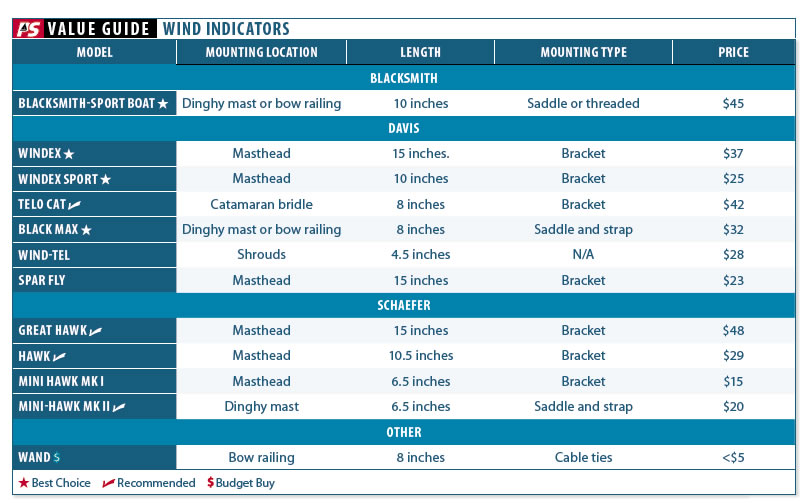
- A Do-it-Yourself Wind Sensor
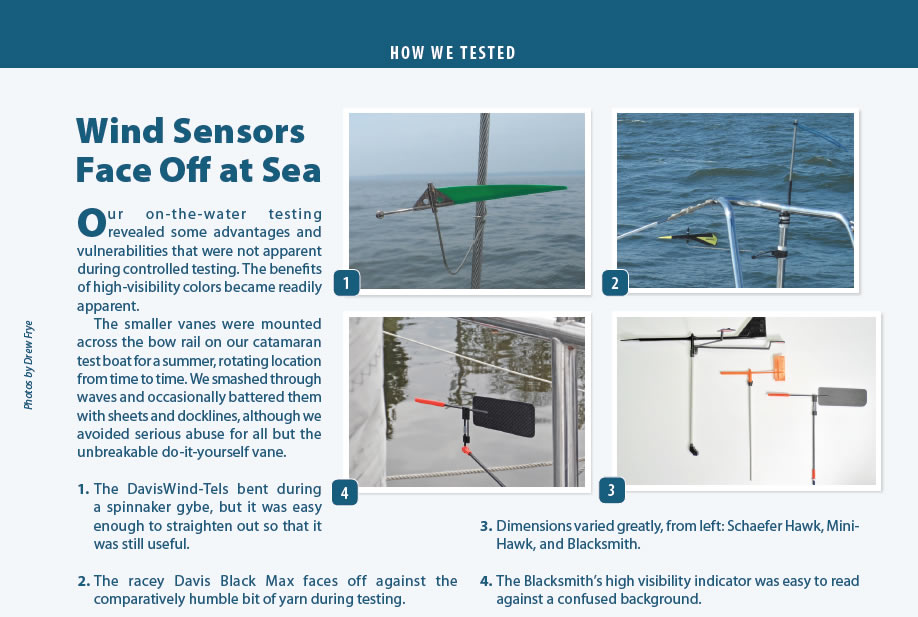
Our on-the-water testing revealed some advantages and vulnerabilities that were not apparent during controlled testing. The benefits of high-visibility colors became readily apparent.
The smaller vanes were mounted across the bow rail on our catamaran test boat for a summer, rotating location from time to time. We smashed through waves and occasionally battered them with sheets and docklines, although we avoided serious abuse for all but the unbreakable do-it-yourself vane.
- The DavisWind-Tels bent during a spinnaker gybe, but it was easy enough to straighten out so that it was still useful.
- The racey Davis Black Max faces off against the comparatively humble bit of yarn during testing.
- Dimensions varied greatly, from left: Schaefer Hawk, Mini-Hawk, and Blacksmith.
- The Blacksmith’s high visibility indicator was easy to read against a confused background.
RELATED ARTICLES MORE FROM AUTHOR
The last three windex vanes I have used have decayed in the sun in less than a few weeks. any slight action like removing them to step the mast on the trailer sailer results in damage . brittle bits just flake off. I am averaging $50 a year AU in wind indicators. have ordered a stainless steel one. a bit big but may be UV stable.
How is your stainless wind indicator? I am working on designing a lightweight anodised aluminium wind indicator. I am a professional yachtsman and have seen lots of stories like yours in Oz particularly with cockatoos!
The indicator I am designing will be similar profile to the windex brand but a lot lighter than the available stainless ones also with jewel bearings for light air accuracy. Would you be interested in a solution like this? Any advice is appreciated.
Happy sailing
Hi Oliver, did you ever develop this?
LEAVE A REPLY Cancel reply
Log in to leave a comment
Latest Videos
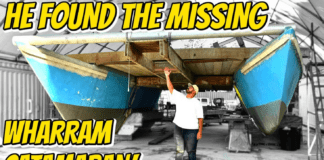
The 51 Foot Wharram Catamaran He Finally Found!

How to Use a Boat for Beginners – Port & Starboard,...

24 Knot Speed Trimaran – The Dragonfly 40 Ultimate

AMAZING Sailboat Drones, US Navy Deploys 65 Foot Sailing Drone
Latest sailboat review.
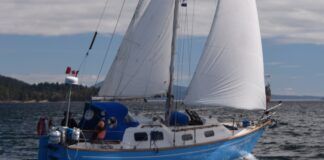
- Privacy Policy
- Do Not Sell My Personal Information
- Online Account Activation
- Privacy Manager

IMAGES
COMMENTS
Five Oceans 14-1/2-Inch Sailing Boat Wind Direction Indicator, Wind Vane with Sensitive Ball Bearing - FO2080
It can measure wind speeds ranging from 0.5 miles per hour all the way up to 99MPH at user-selectable intervals of every five, ten, or 13 seconds (in addition to calculating the average wind speed and tracking peak speed for you).
In total more than 1,500,000 WINDEX Wind Direction Indicators have been sold over the last 45 years. The different WINDEX models are found at the top of masts on every type of sailboat from Americas Cup boats to racing dinghies, and everything in between.
The WINDEX Wind Direction Indicator is an indispensible tool for sailors of all levels since it allows instant and accurate wind information at all points of sail.
Has high sensitivity and starting threshold of wind speed, can effectively indicates the wind direction and help your sailing. 2. Luminous reflector on the bottom of the vane makes it easy to see both day and night. 3. Manufactured from premium marine grade 304 stainless steel, lightweight yet , UV?proof, will not become porous or brittle. 4.
We offer wind indicators manufactured by Hobie, C-Vane, Optiparts and more. We have full set wind indicators or if you just need a replacement vane, we have those too! These will help you know exactly your wind angles while you're out sailing.
Durable Stainless Steel Red Boat Flag, Lightweight Wind Indicator for Sailboat Yacht with Nylon Material (140x120mm / 5.51x4.72 in)
Take the guesswork out of sailing with our Wind Indicators with our handy and easy-to-use wind indicators. Our Boat Burgees come in various designs to suit your sailing style. Stay informed about wind speed and direction with these simple and affordable devices.
Shop Wind Indicators for boats, yachts, and other marine vessels at Defender. Get fast delivery and free shipping on eligible orders over $99.
Mar 1, 2024 · The most popular masthead wind indicator, these are the gold standard for detecting wind direction finding. Featuring perfect balance and a sapphire bearing, we’ve had these on boats for over 20 years without failure.